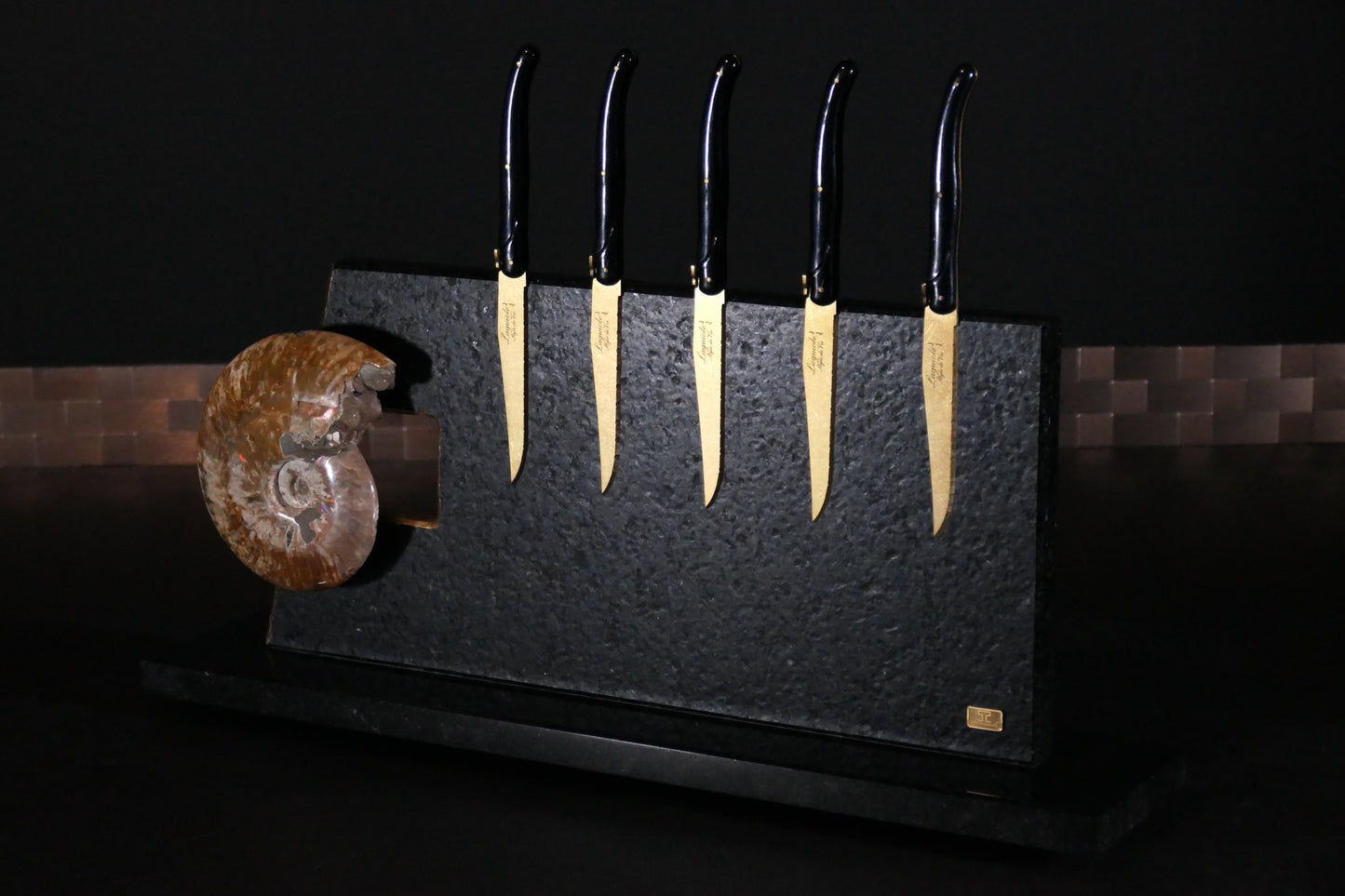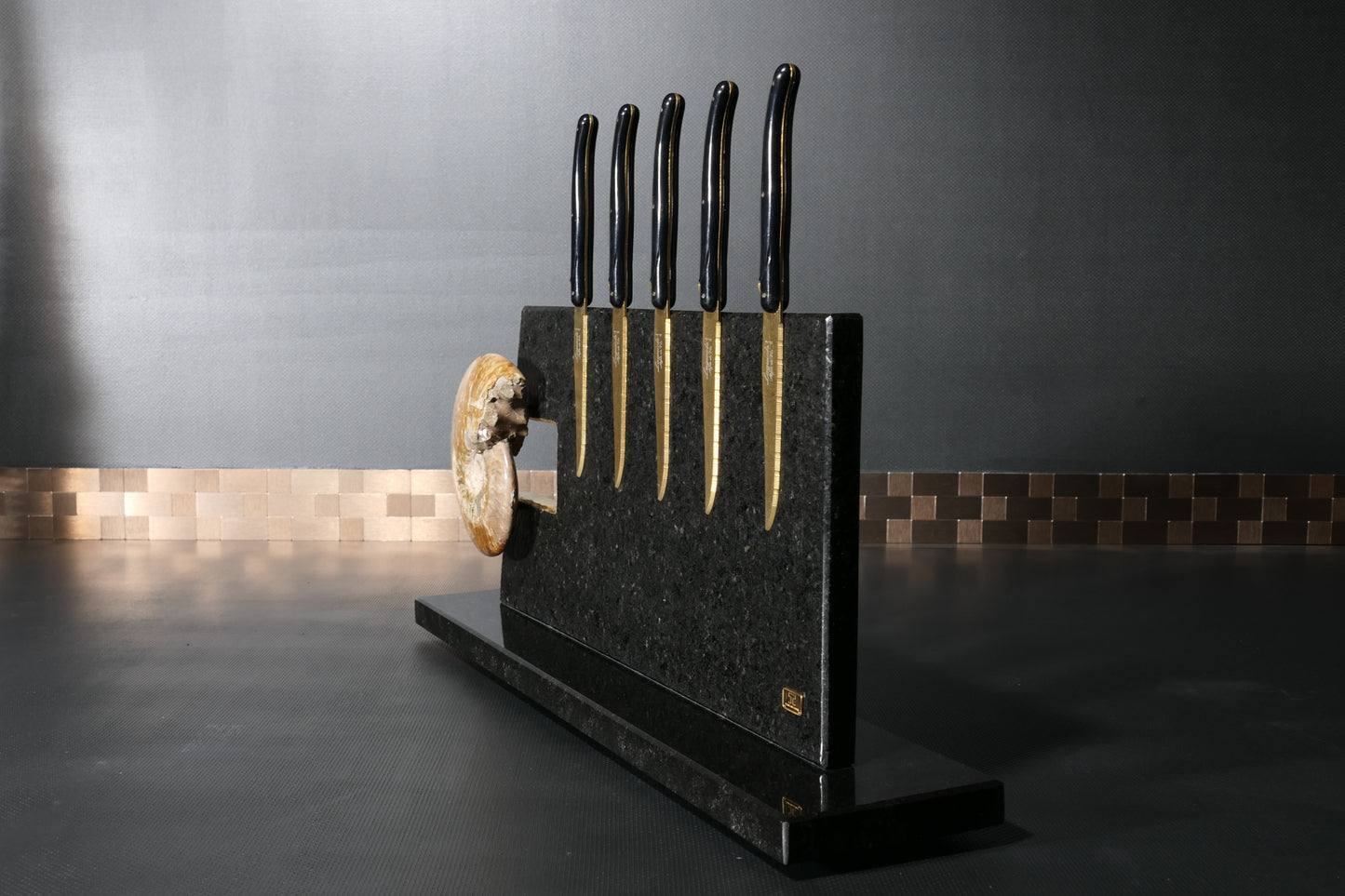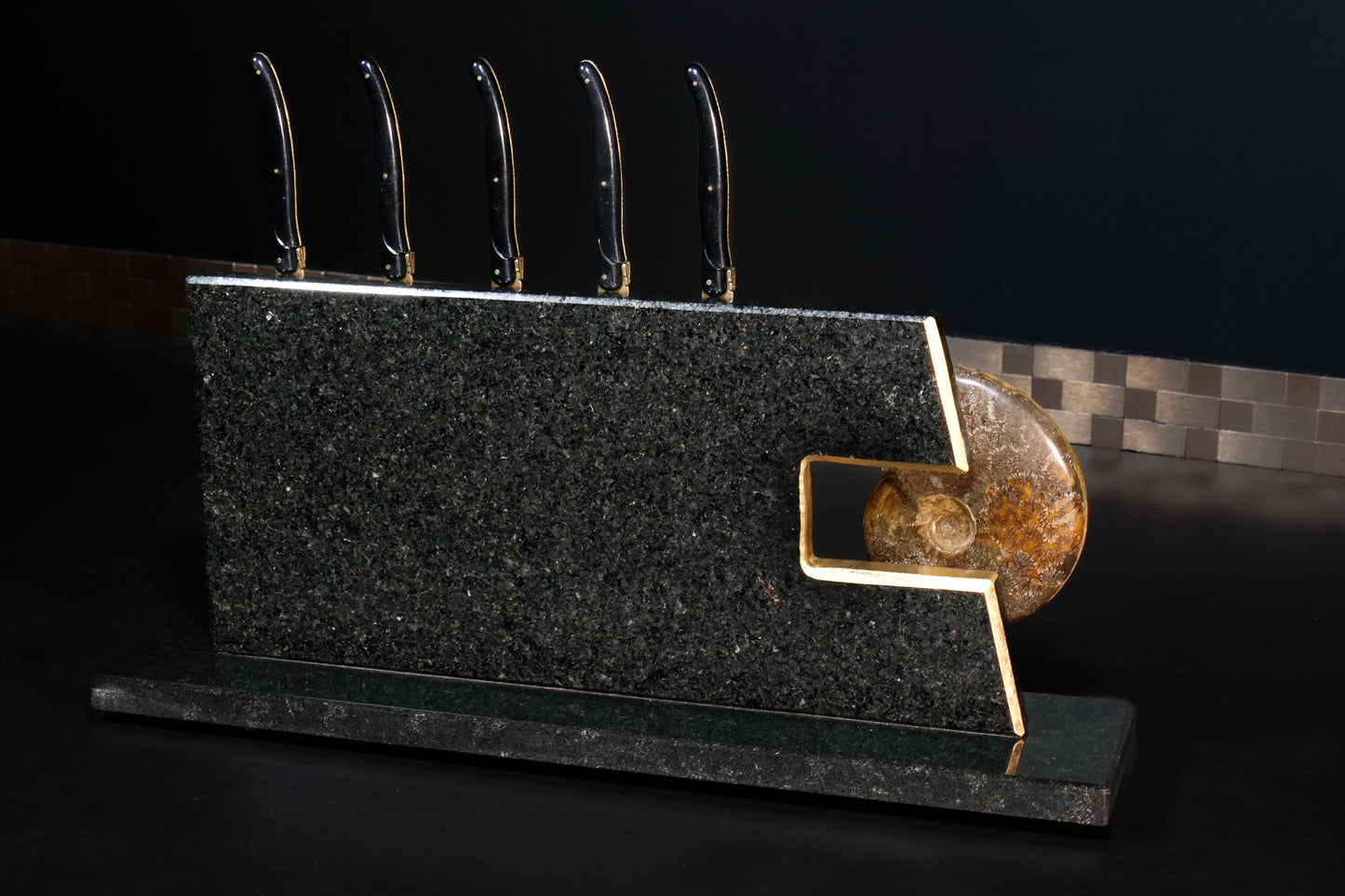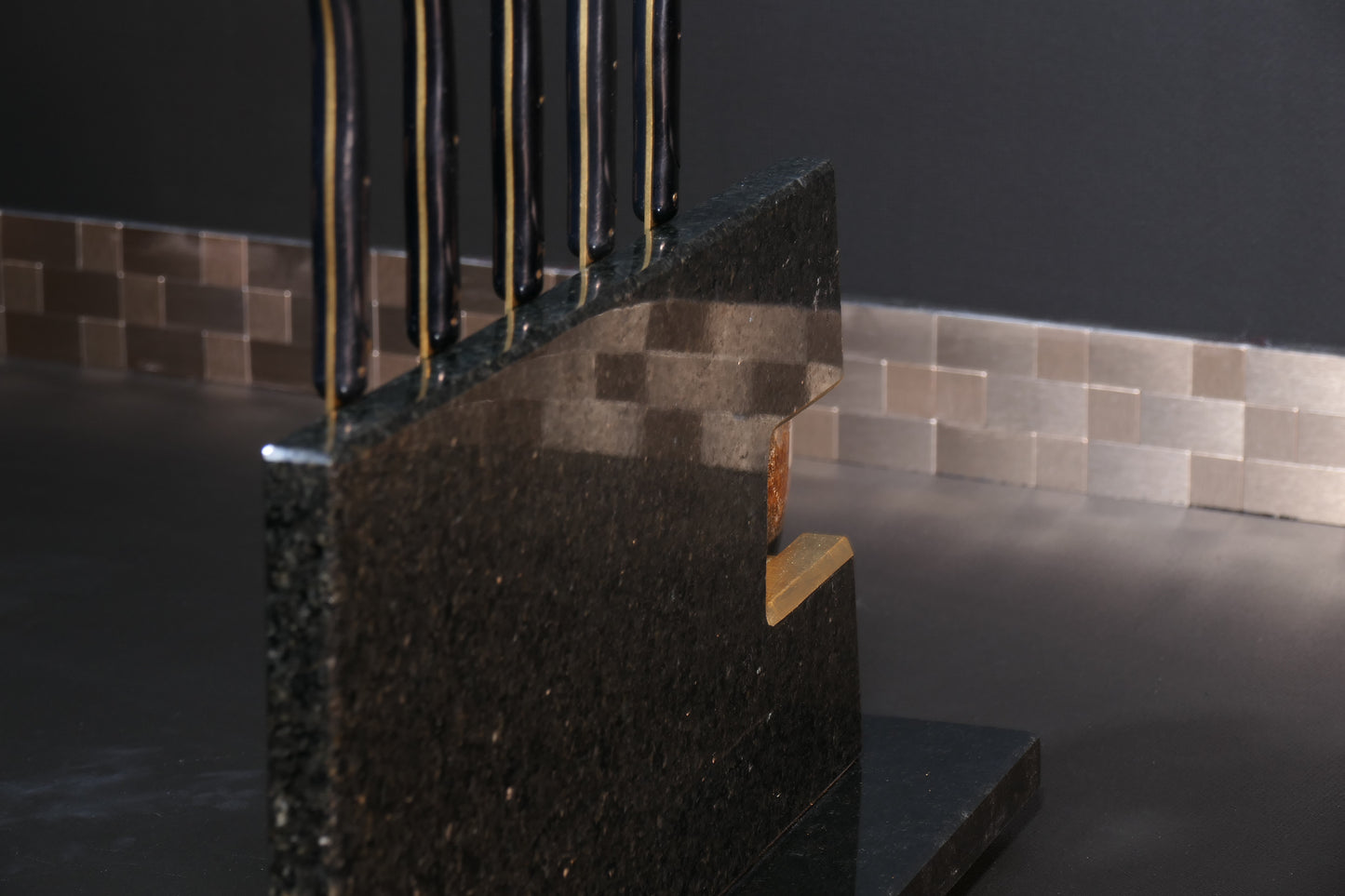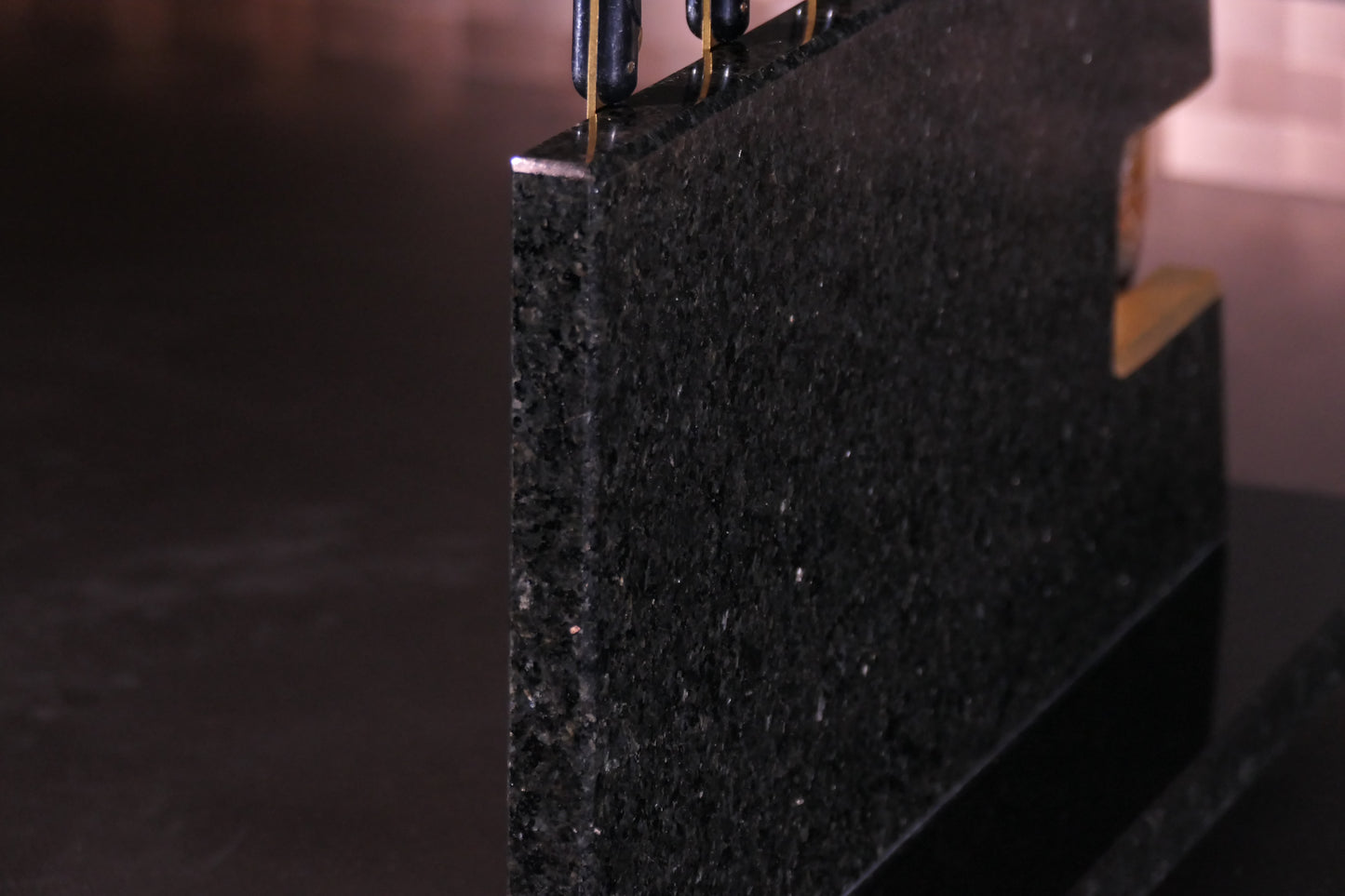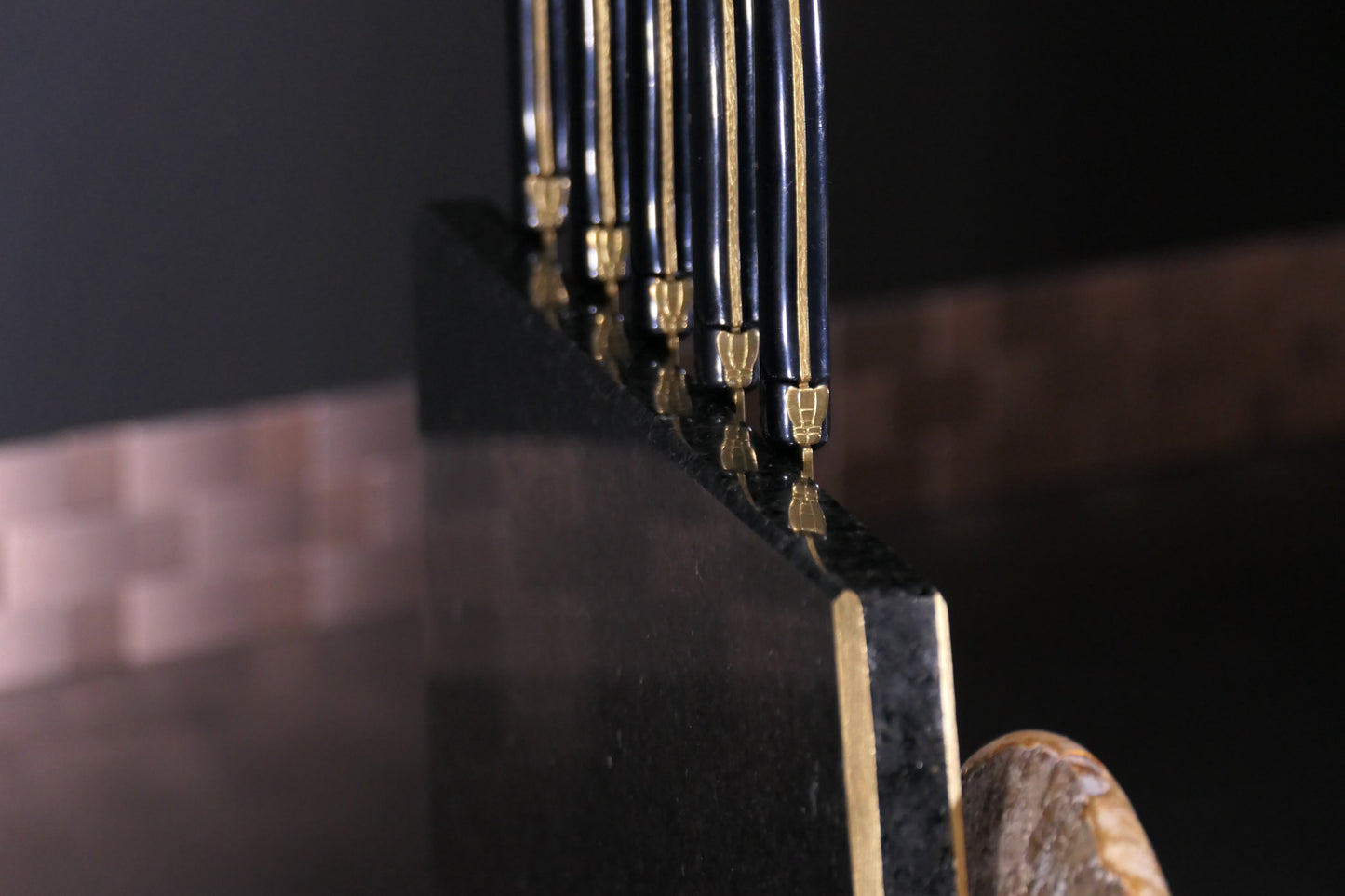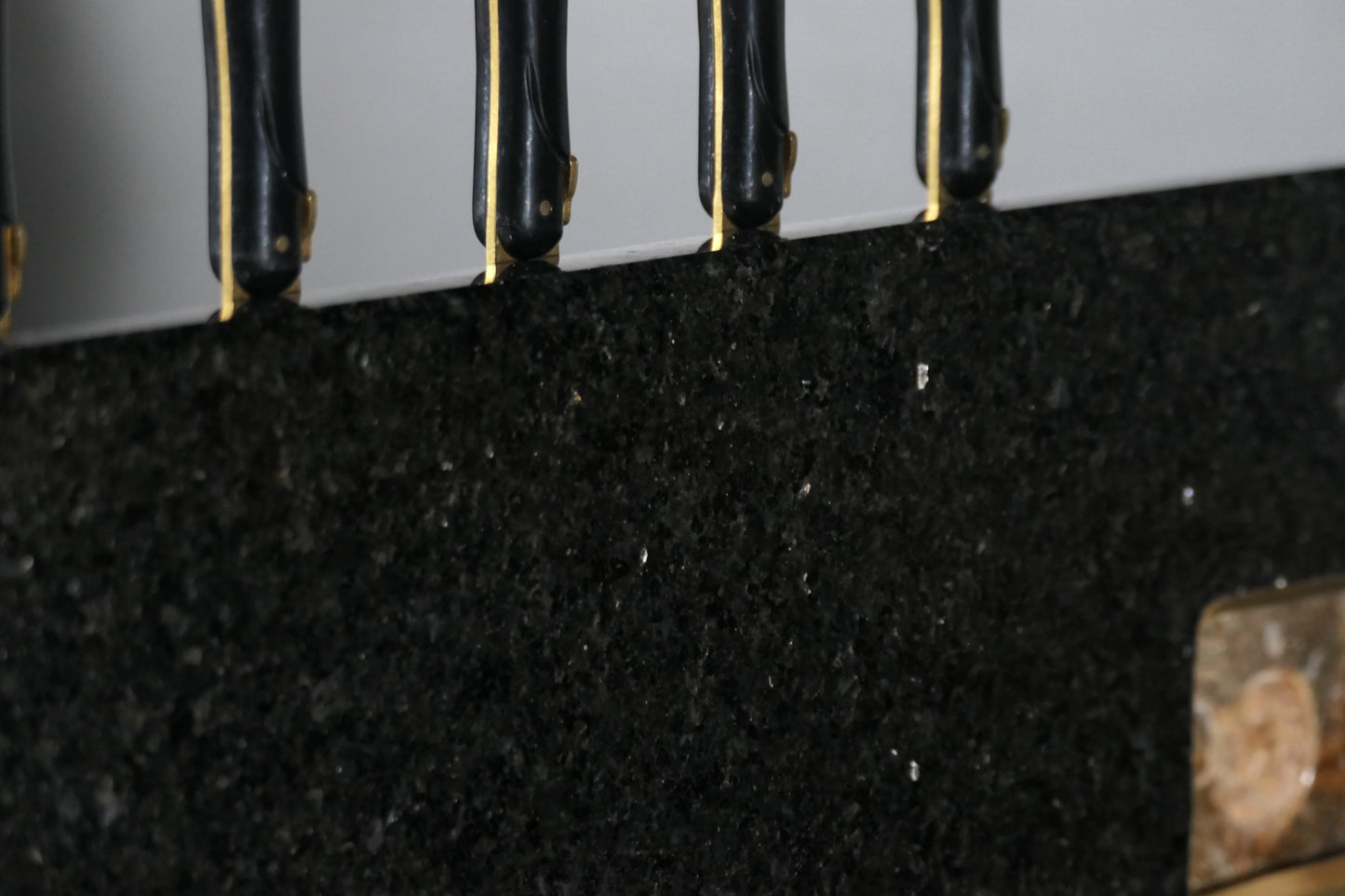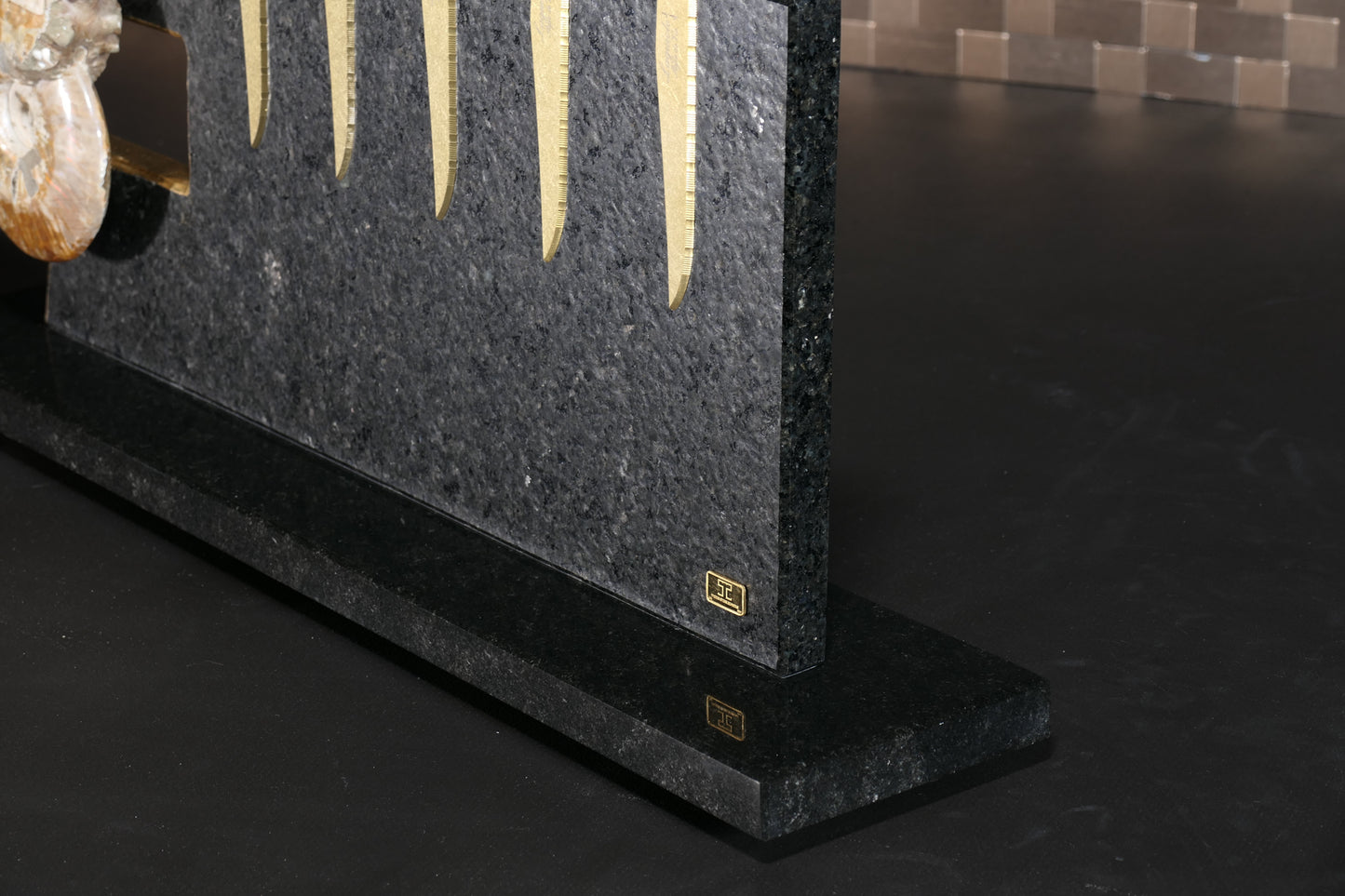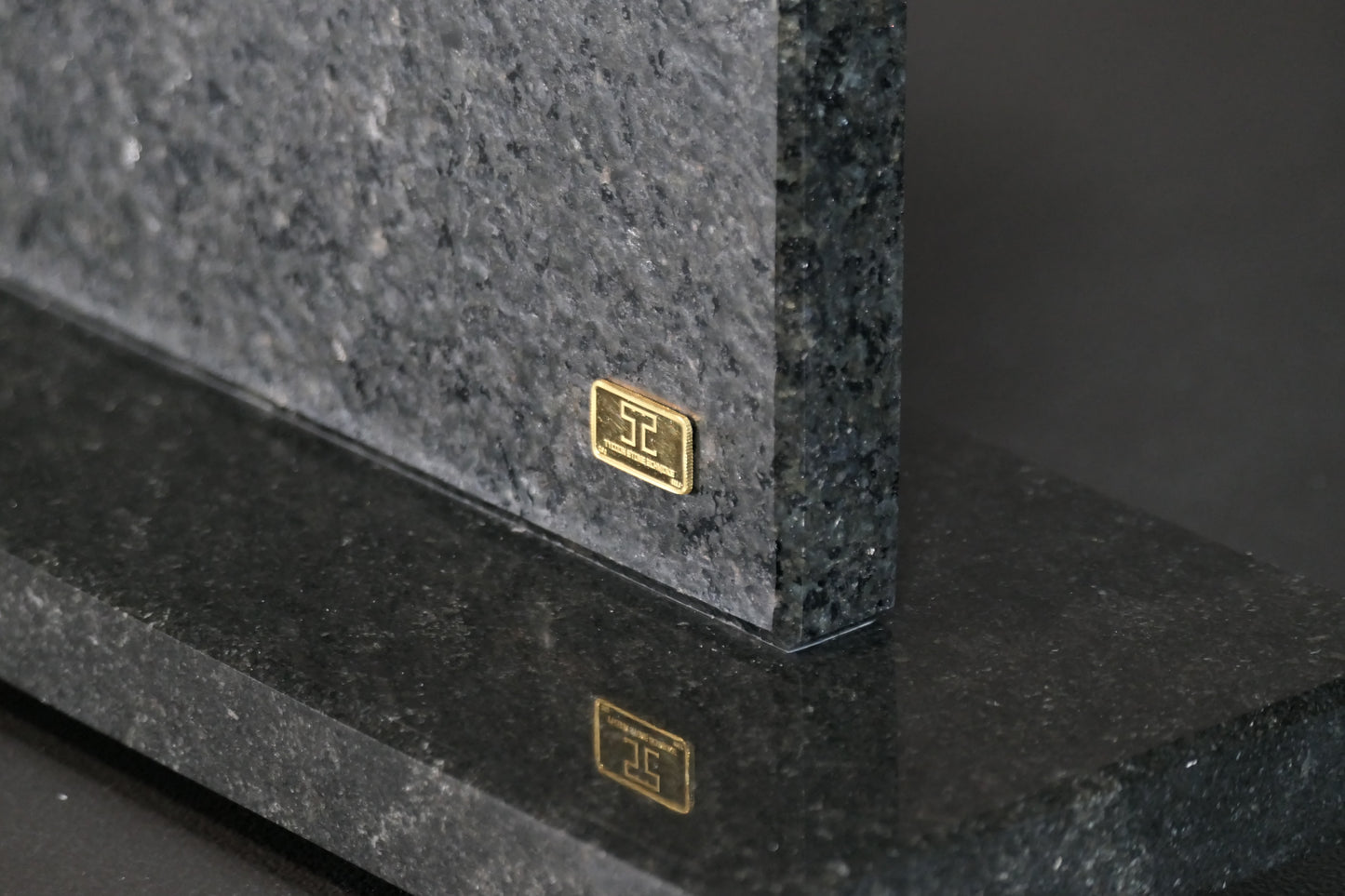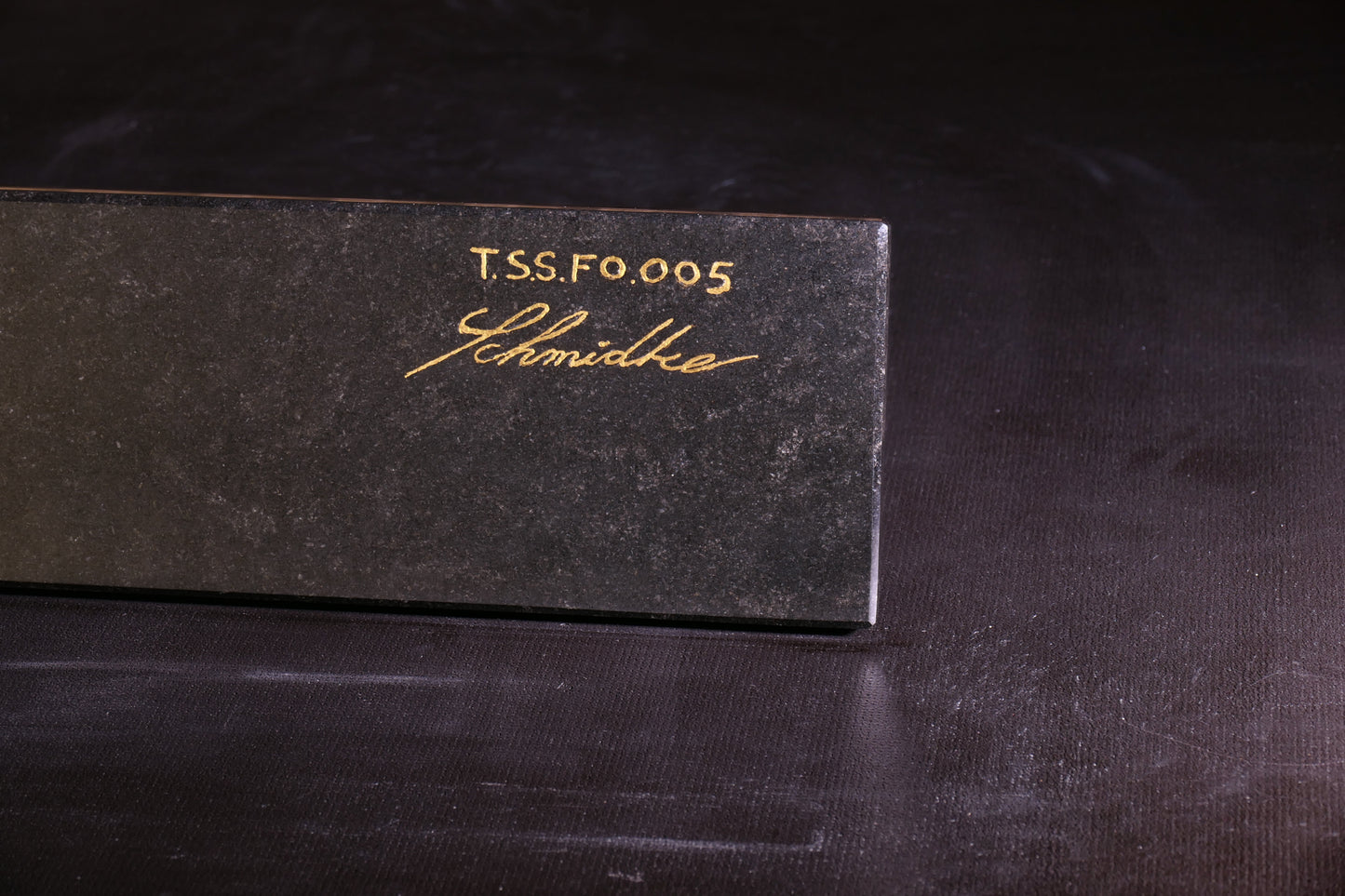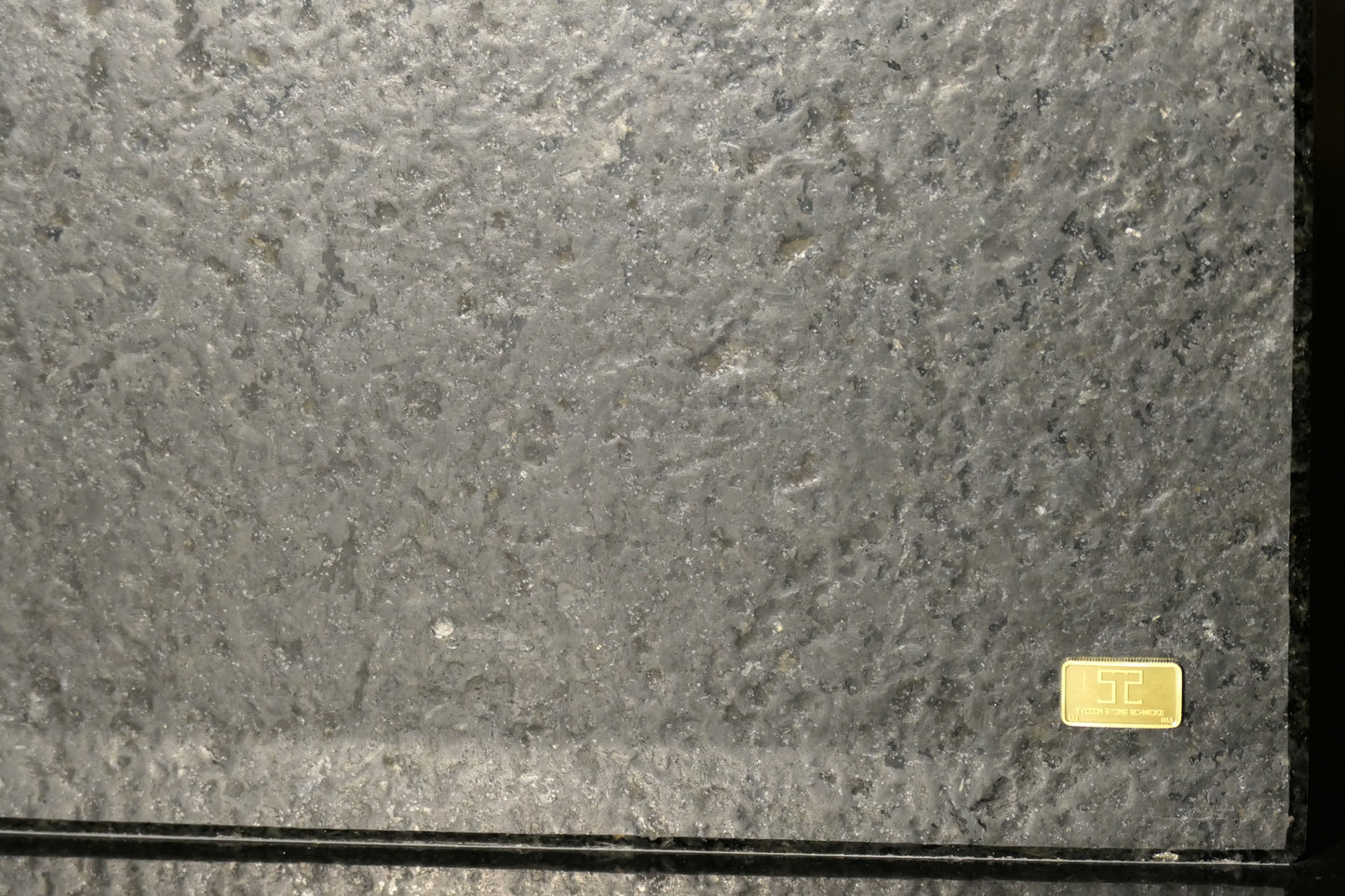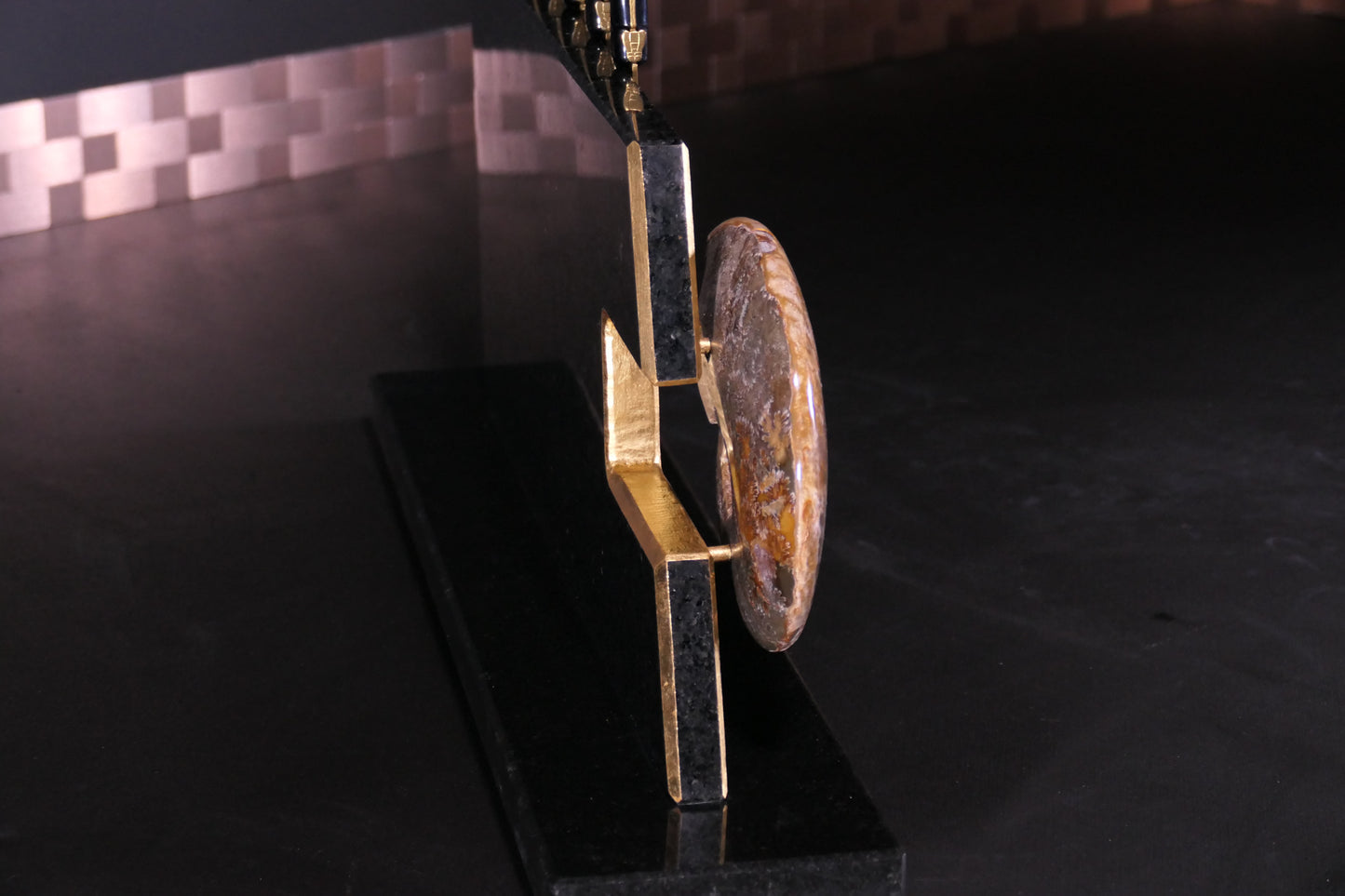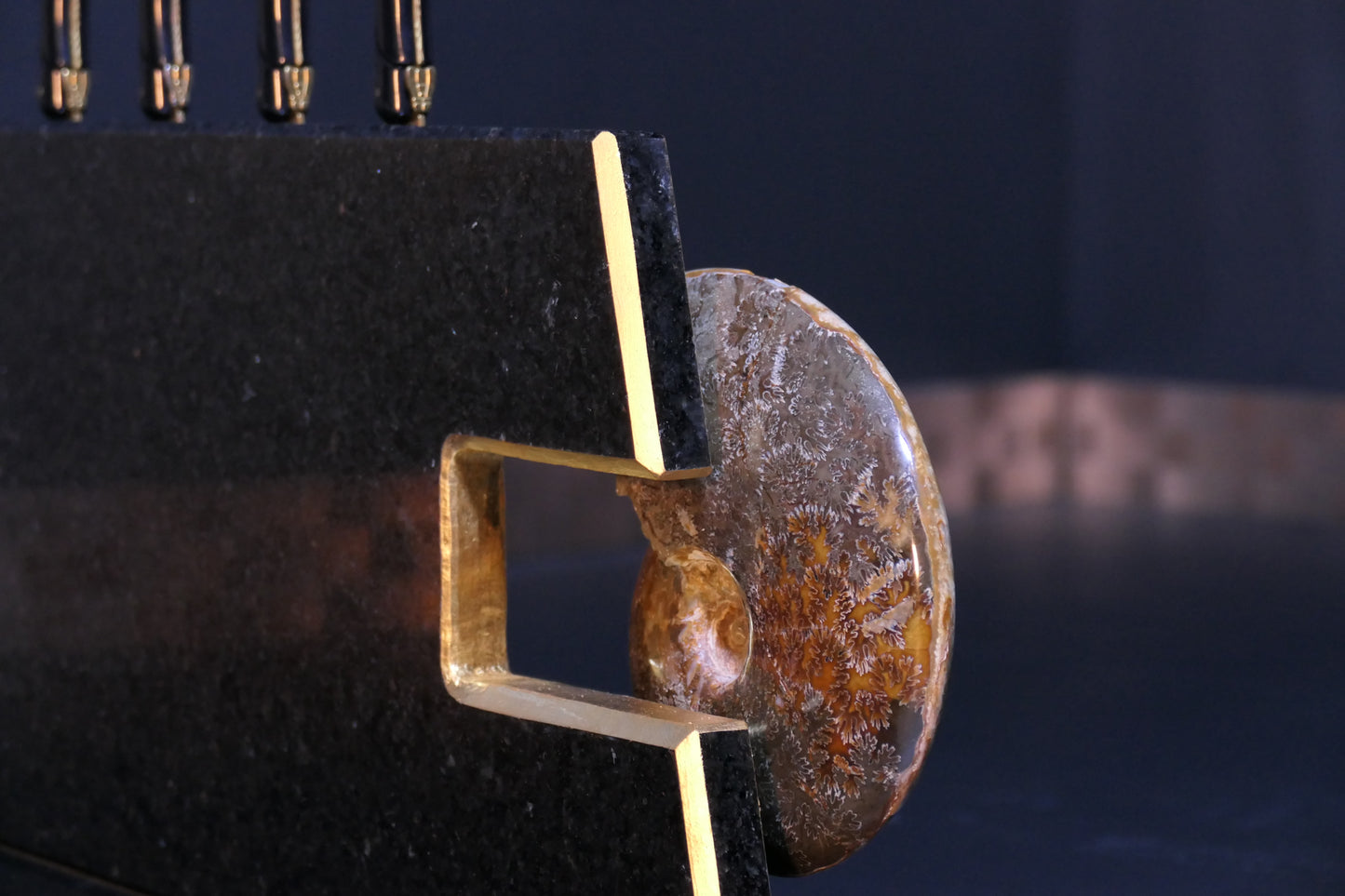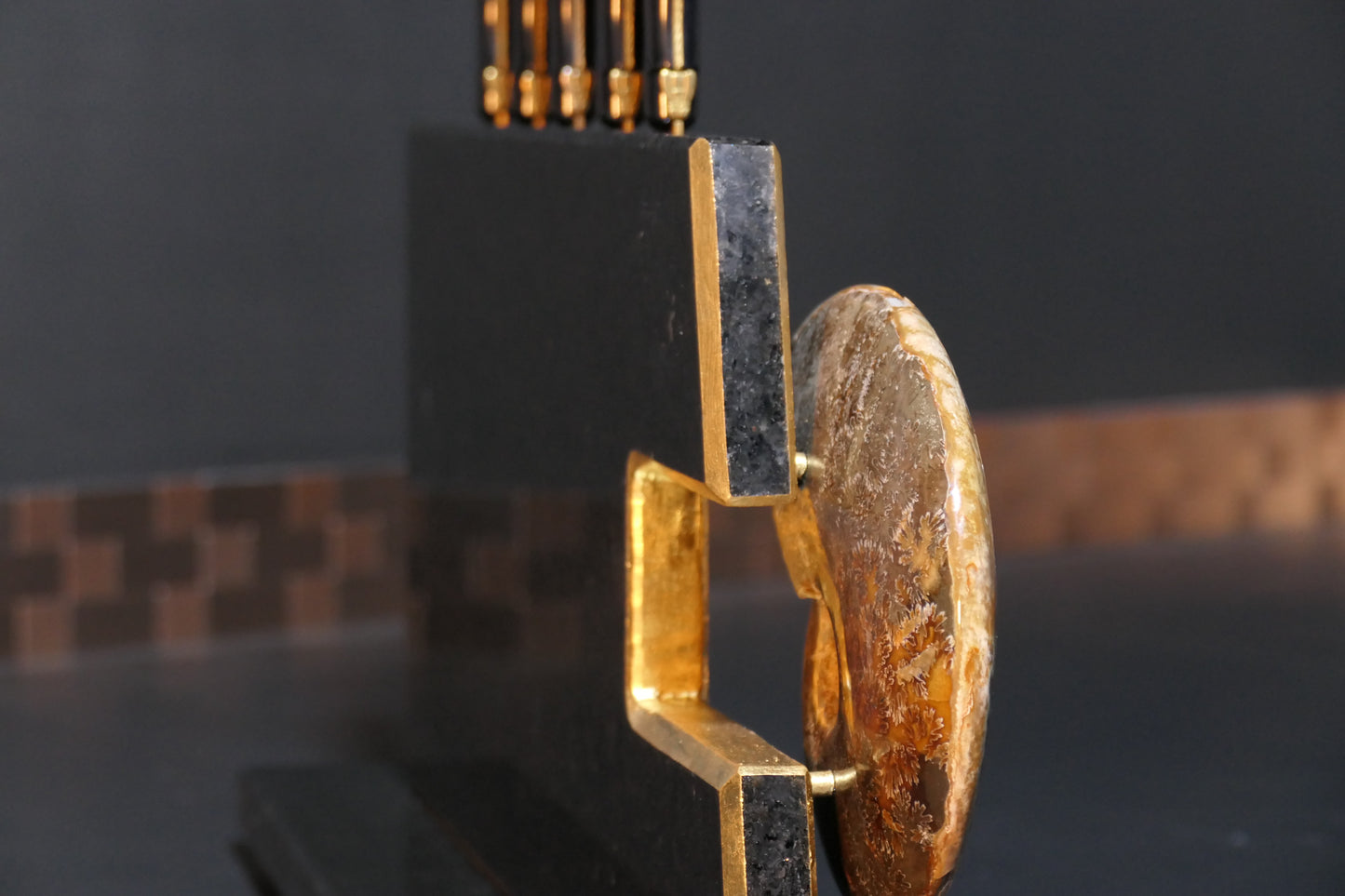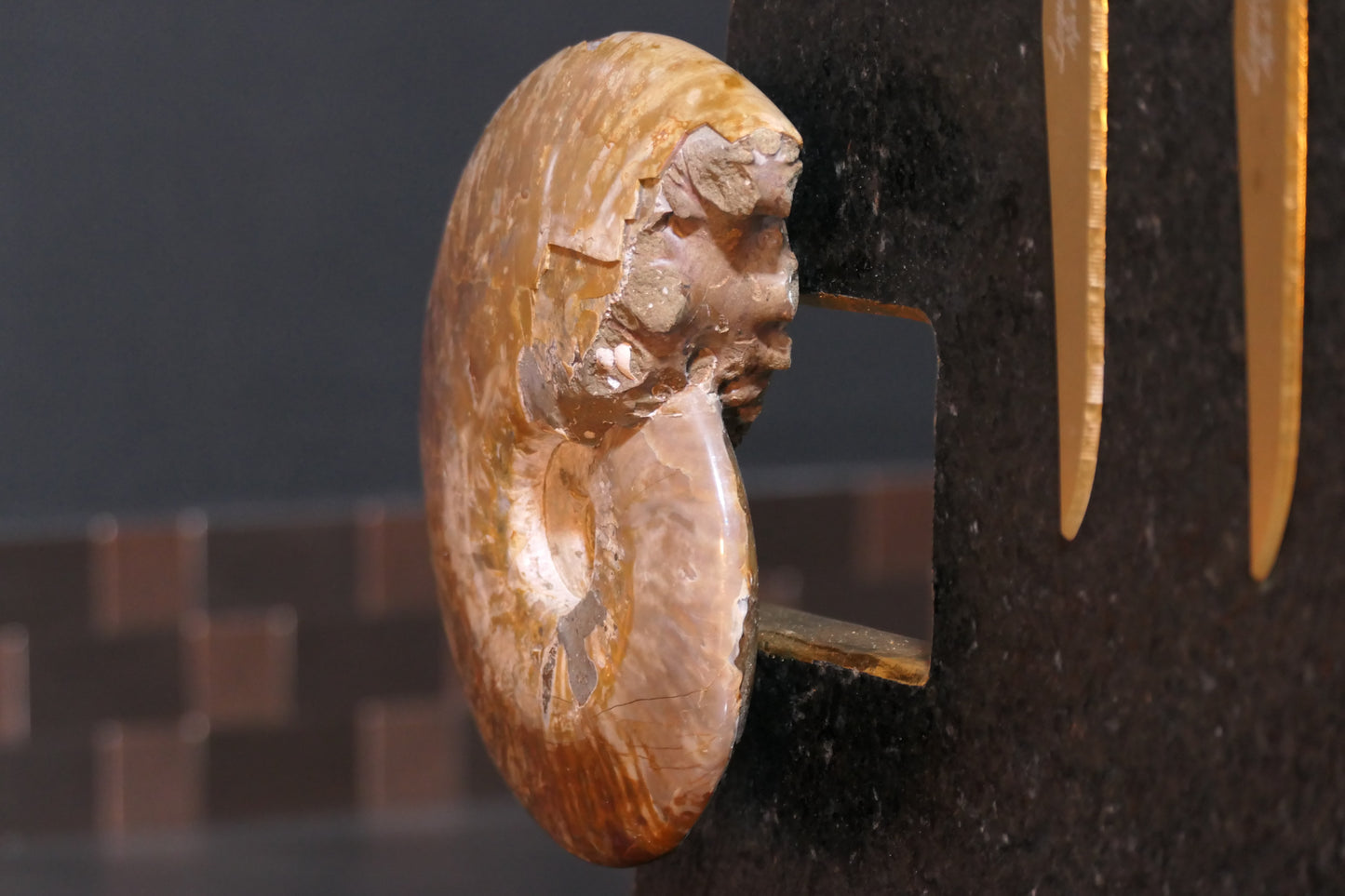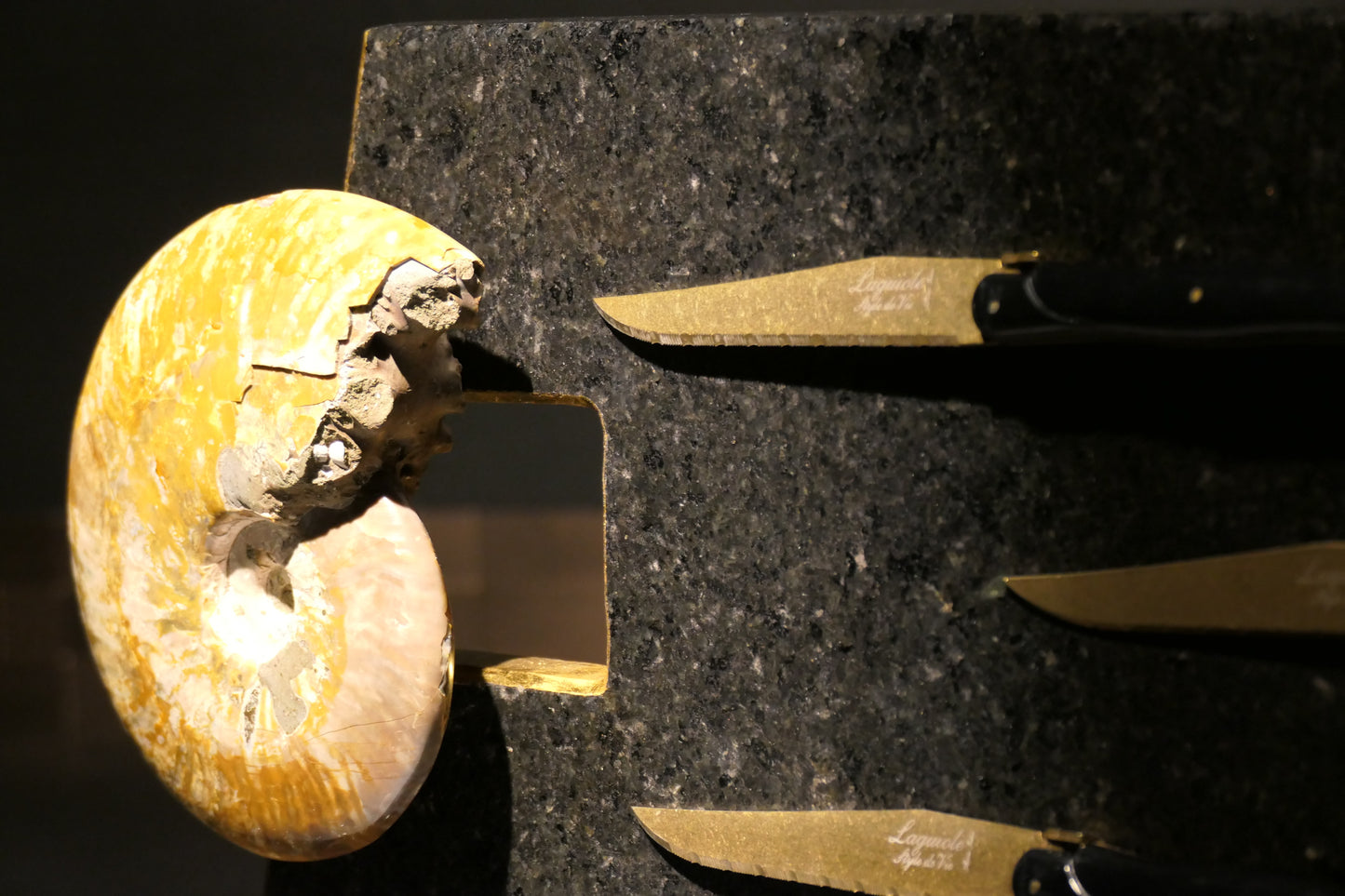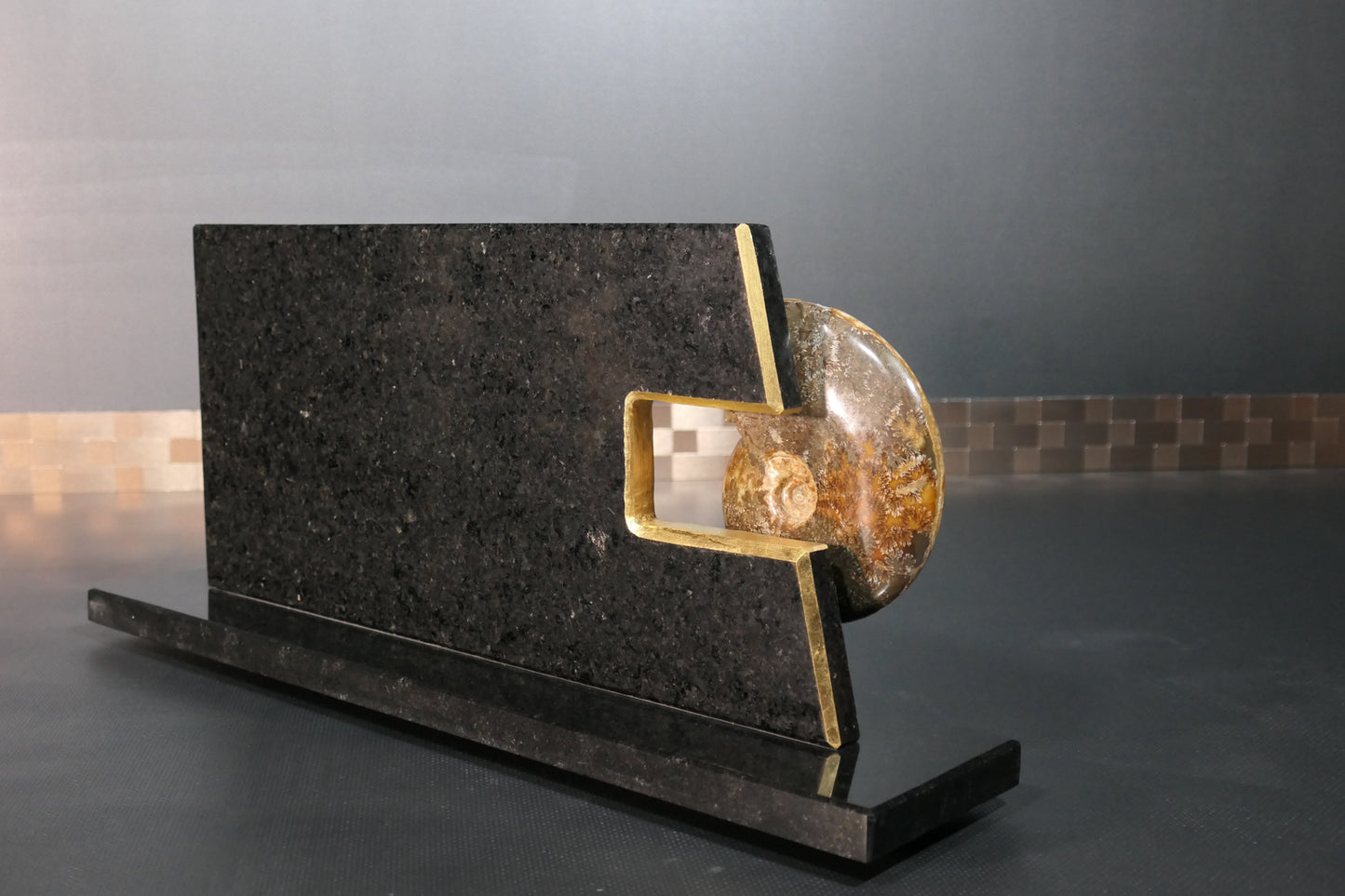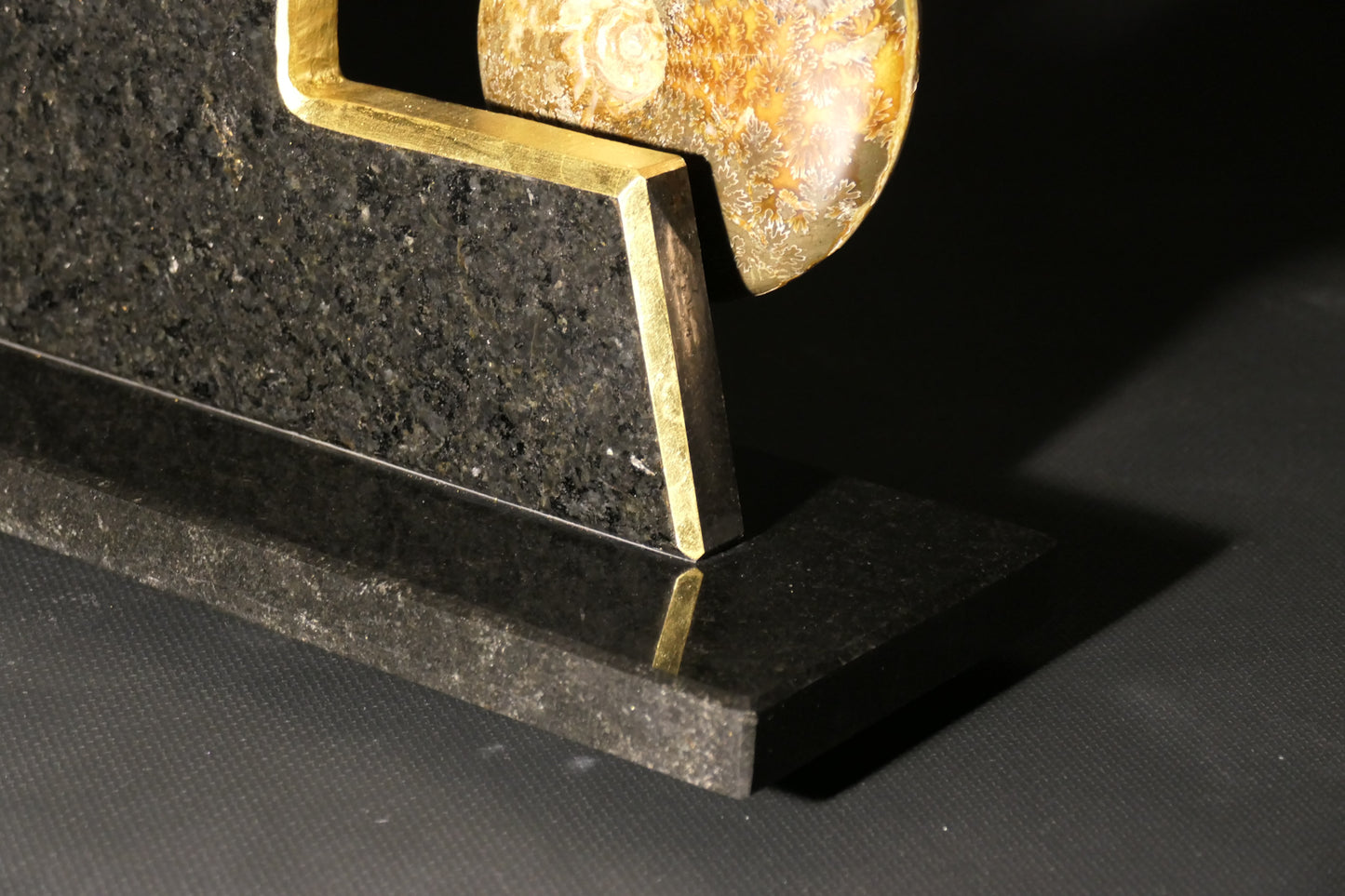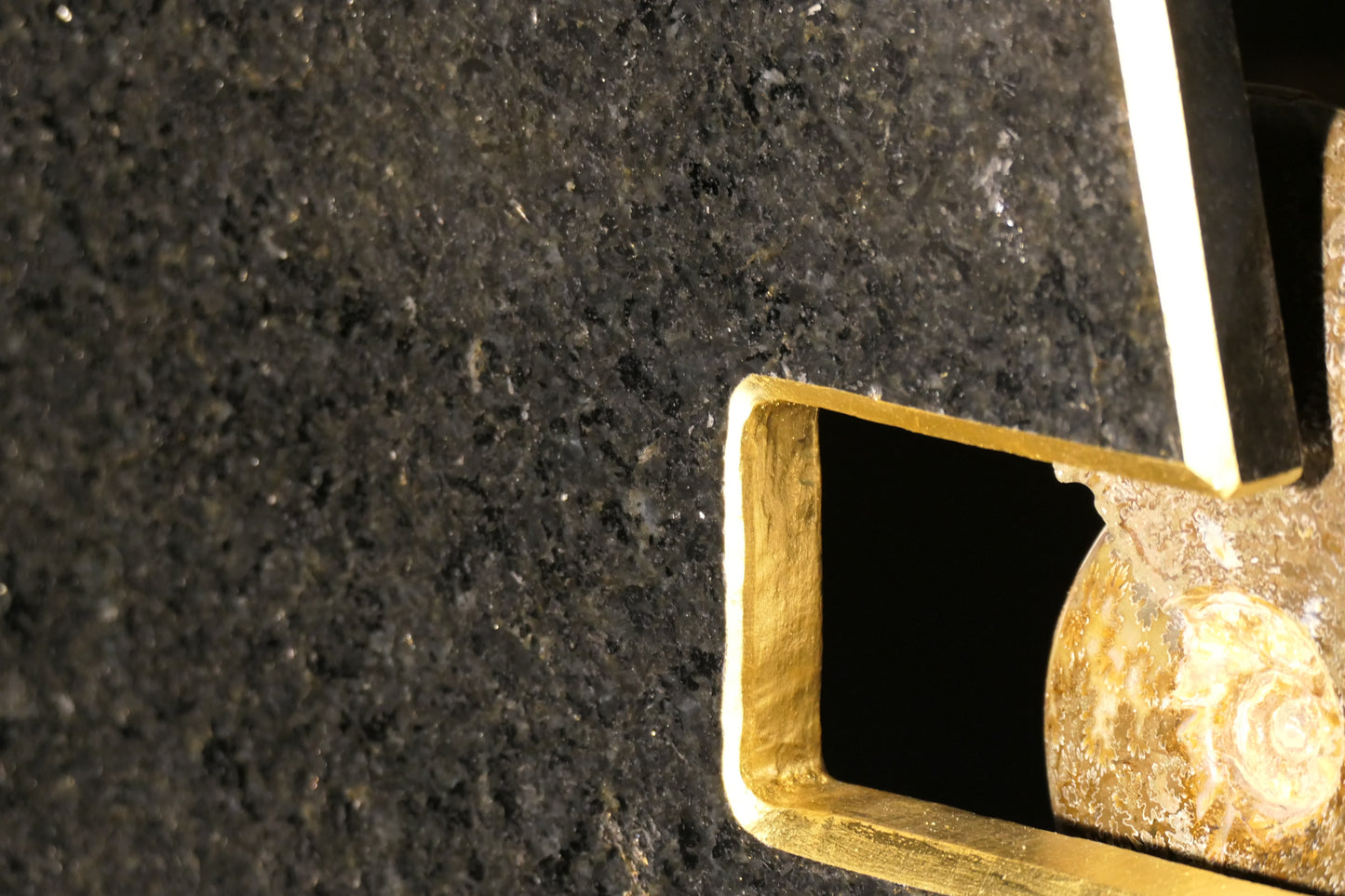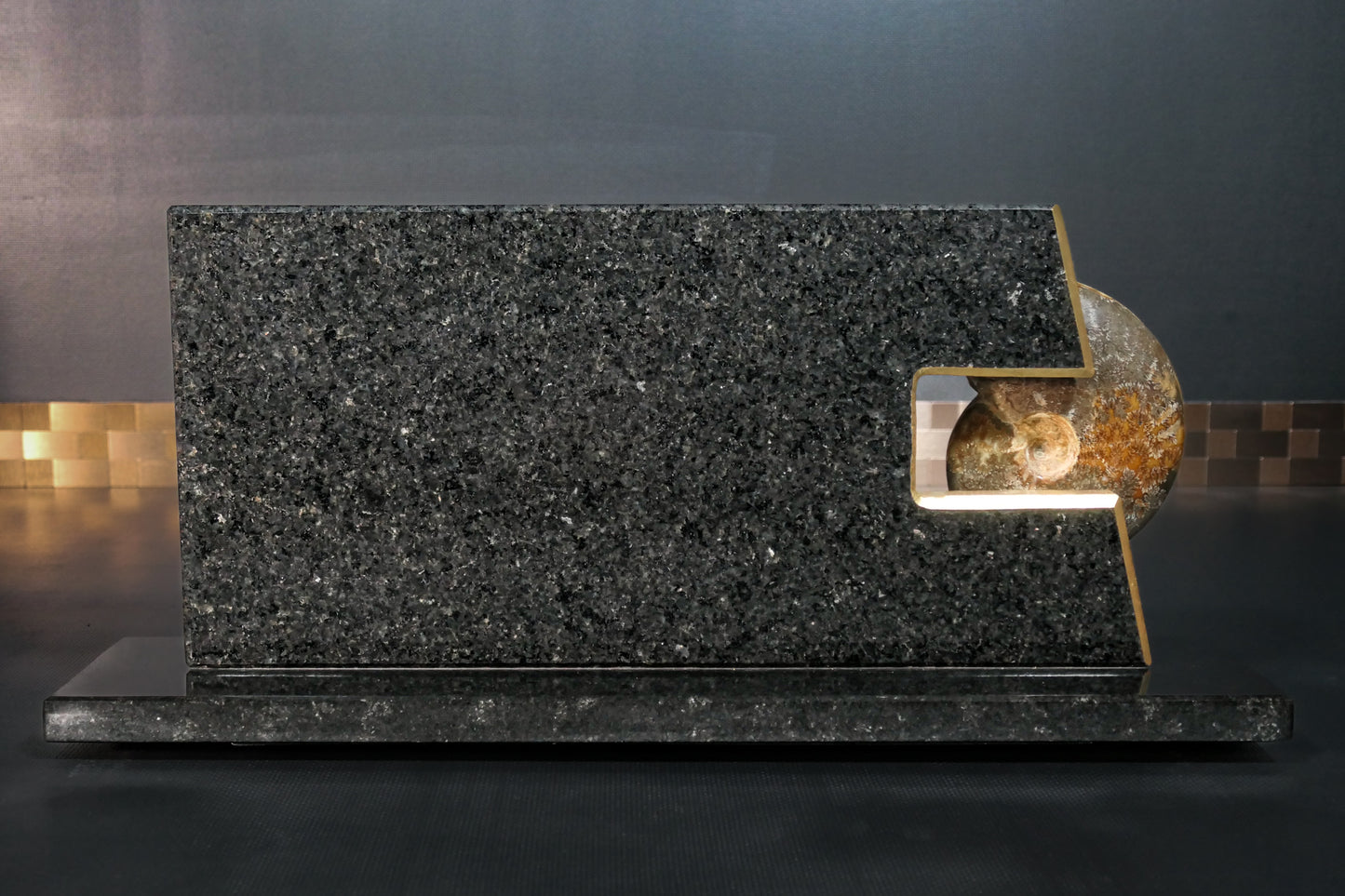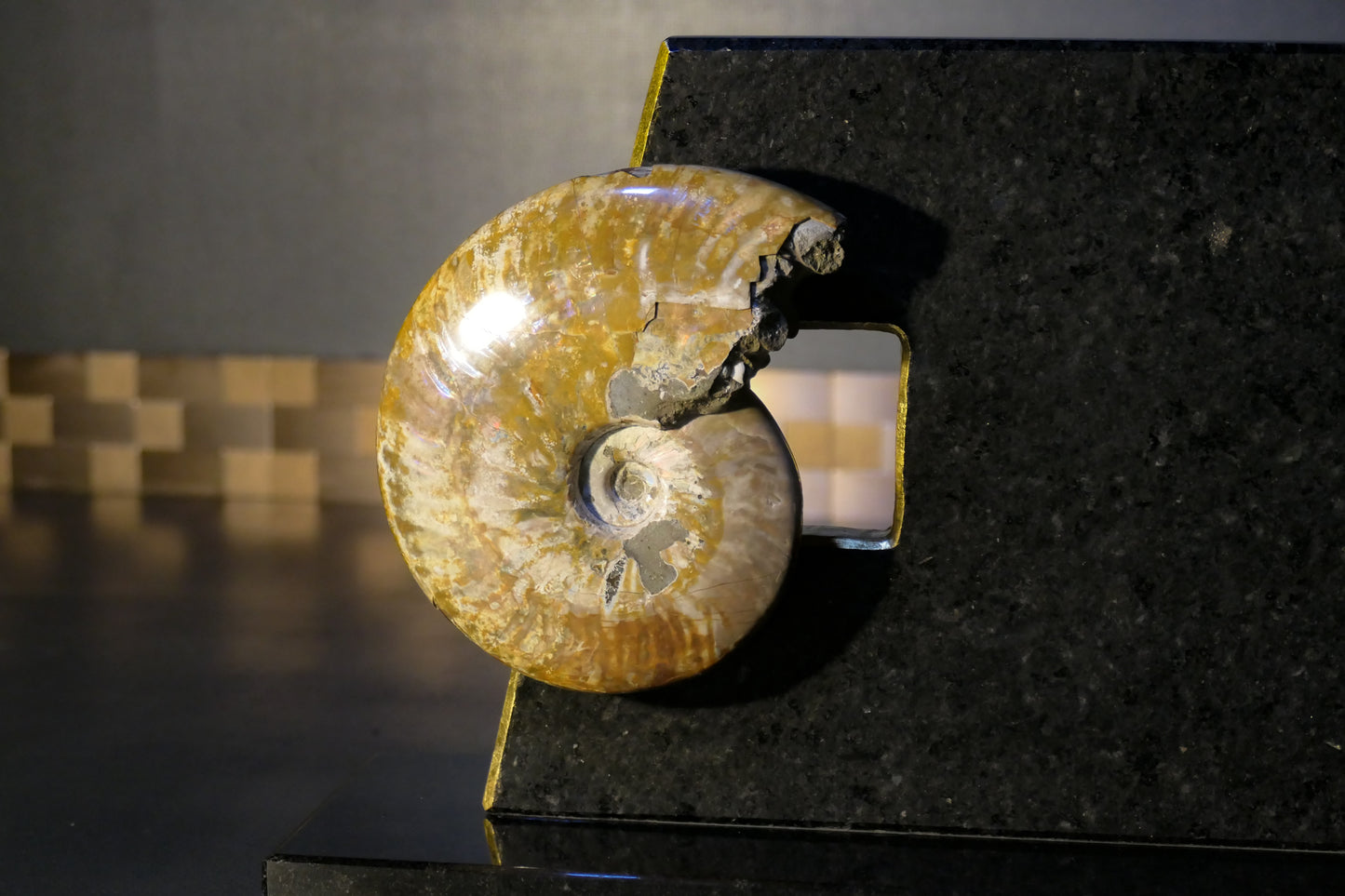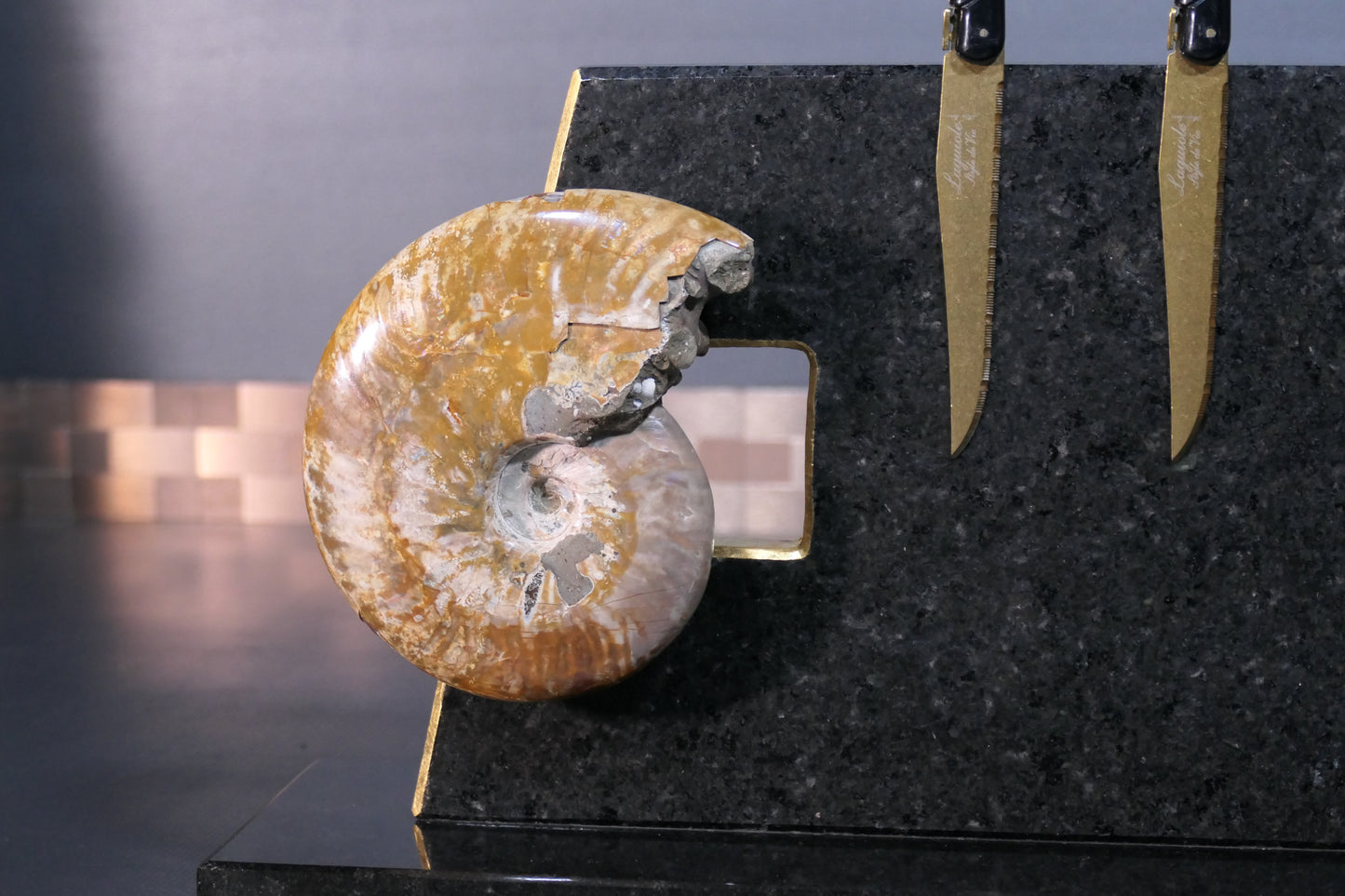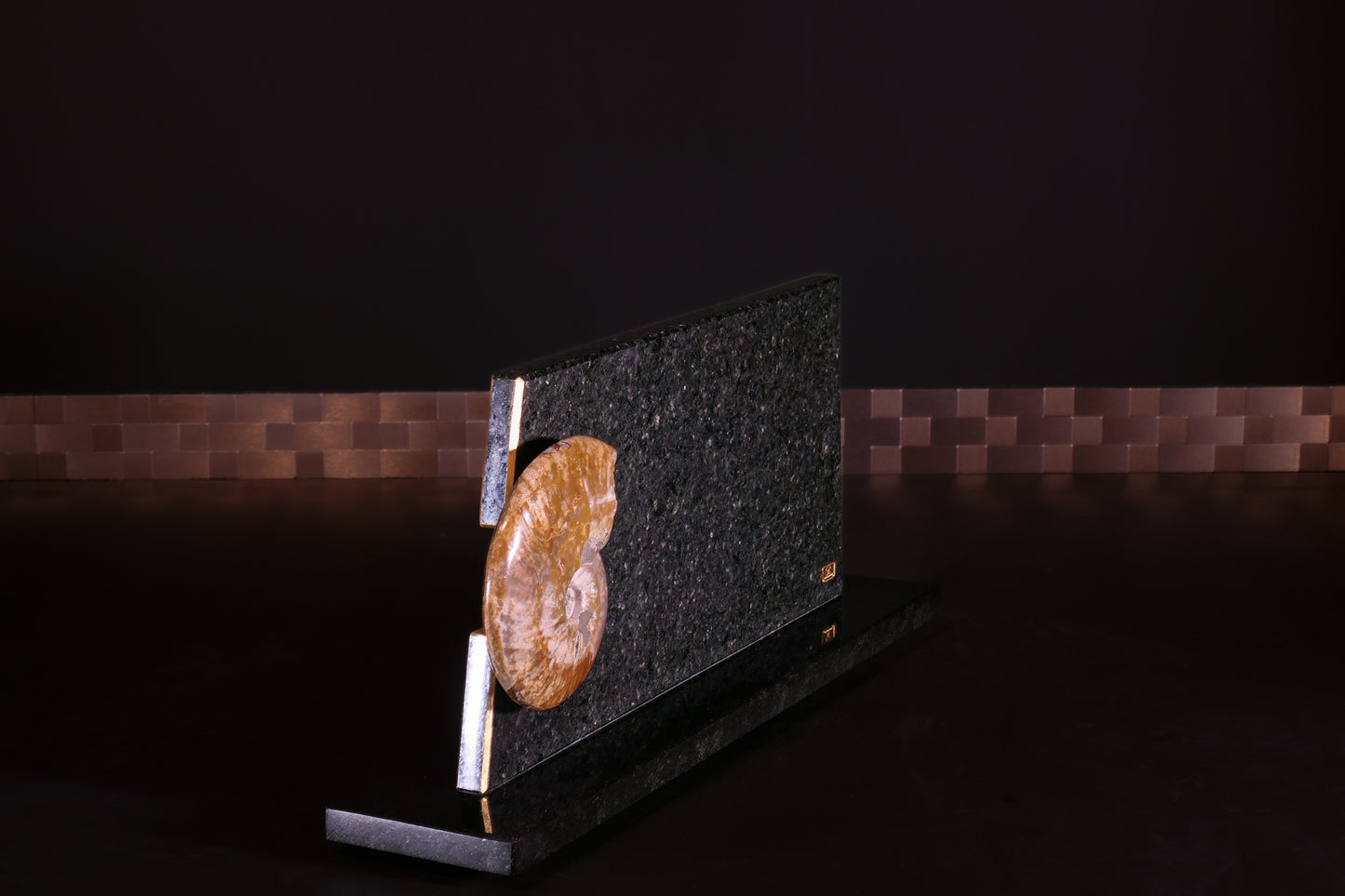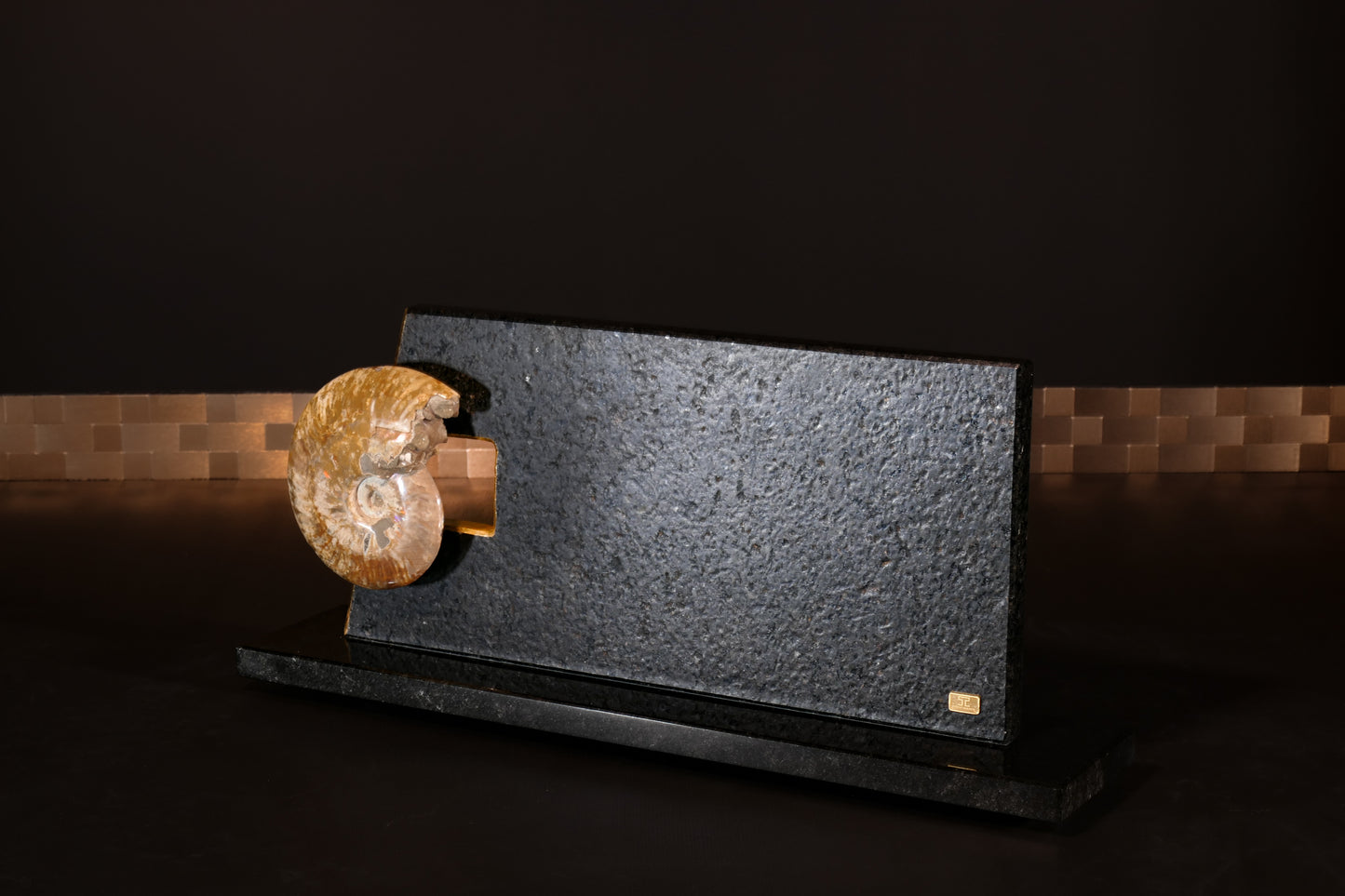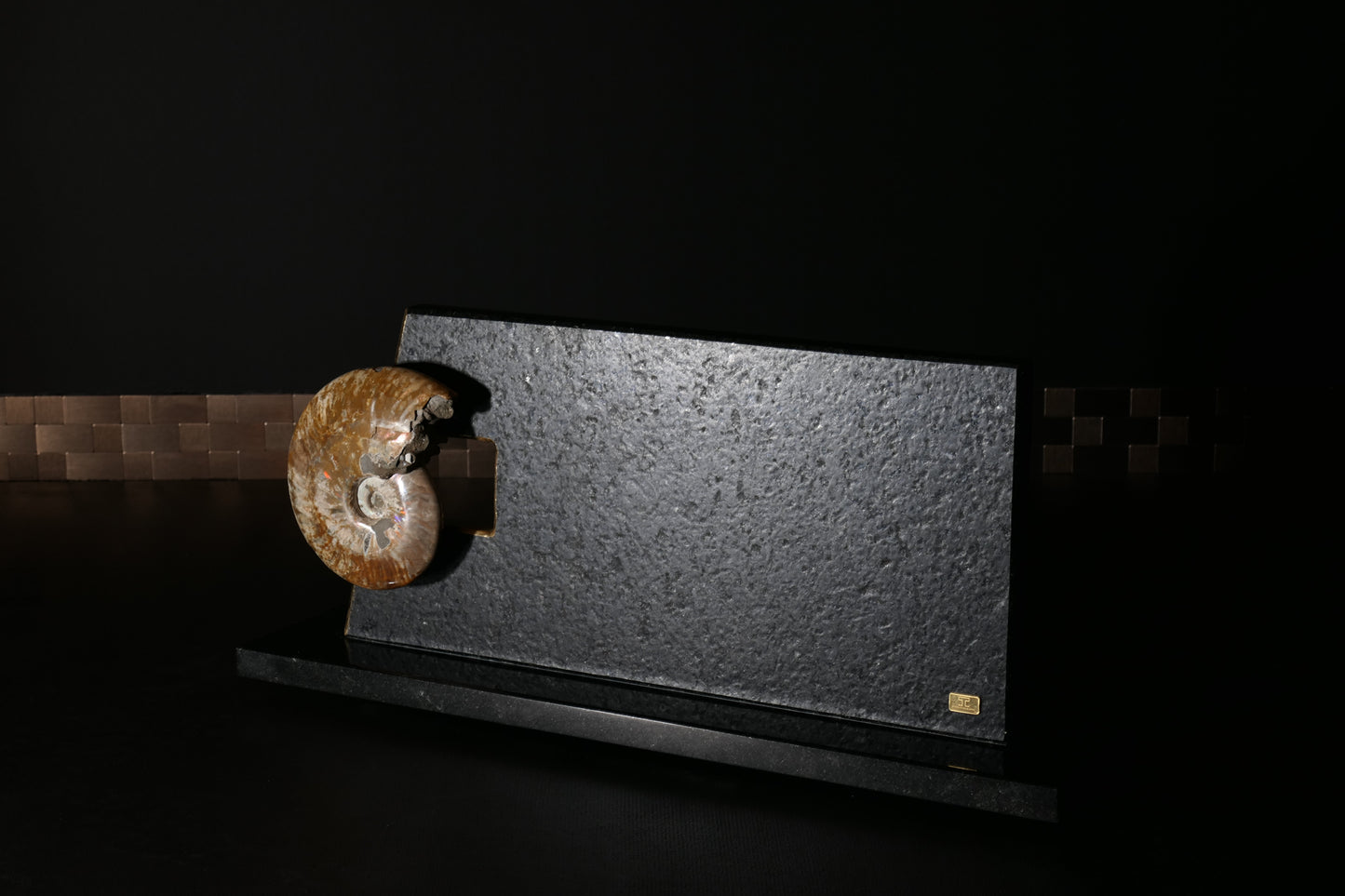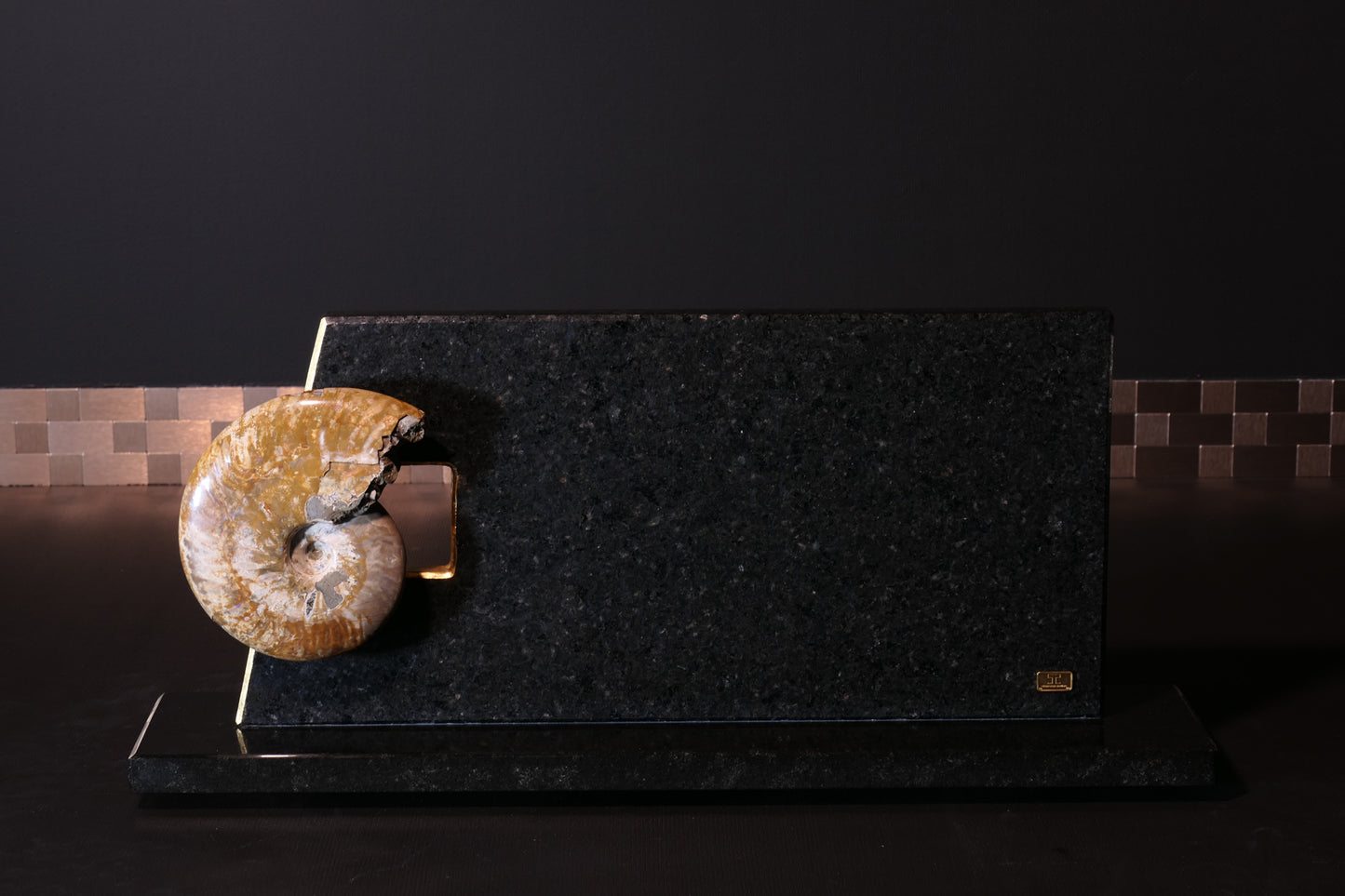Knife block made of Nero Impala with gold plating and an ammonite
Knife block made of Nero Impala with gold plating and an ammonite
Couldn't load pickup availability
Details
| Stopping places | 5 |
| Weight | 10.94kg |
| Size | Length 57 cm | Width 12 cm | Height 24 cm |
| Serial number | TSSFO.005 |
Knife block made of Nero Impala with a brushed front, gold plating and an ammonite that is very rare as it still has tentacles, as can be seen in the pictures, which further increases the attractiveness of this ammonite.
Through the complex grinding and polishing of the outer shell, the so-called lobe lines were exposed at the back. The lobe lines are the seams where the chambers are attached to the shell of the casing. The front of the ammonite shell is mother-of-pearl. The anchoring of the ammonite to the Nero Impala is gold-plated.
| Fossil | Cleoniceras besairiei |
| Location | Madagascar, 100 km from Mahajanga |
| formation | Lower Cretaceous, Alb |
| Old | Over 100 million years |
Ammonites are an extinct group of cephalopods that lived in the sea. There were around 40,000 different species, the largest of which grew to two meters. This ammonite was found in Madagascar and dates back to the Lower Cretaceous period. This makes them around 150 million years old. It's just unbelievable! Ammonites became extinct around 65 million years ago, around the same time as the dinosaurs. The shape of their shells resembles a spiral tube. The animals only lived in the end of the tube. The remaining chambers were filled with air and made it easier to sink and rise in the water.
Nero Impala impresses at first glance with its elegant, uniform appearance. This natural stone is an anthracite-colored to black natural stone and belongs to the Gabbro rock family. Furthermore, from a petrological point of view, it is a norite. Norites are formed from metal-containing melts in the upper earth's crust. The South African rock plate, which also contains Nero Impala as a rock material, extends over a huge area of 66,000 km² and is one of the largest rock deposits of its kind with the world's largest raw block mining volume of a hard rock of 150,000 m³, but only 10 to 12% of the mined rock volume consists of Nero Impala and can be used for further processing. The predominantly 90% mined norite rock from this huge rock formation contains large ore deposits, the largest known deposit of platinum in the world, and over half of the world's chromium deposits as well as the world's largest vanadium deposit.
Description: Nero Impala dark
Type of rock: Gabbro-Norite
Age: Precambrian (covers the first 4 billion years of Earth’s history)
Appearance: Black, Grey, Medium Grain
Location: Bossporite, Rustenburg, Republic of South Africa
Acid resistance: The stone is resistant to acid attacks within normal limits.
Technical data: Nero Impala
Bulk density: 2.99 t/m³
Compressive strength: 265 MPa
Bending strength: 22 MPa
Water absorption: 0.03% by weight
Frost resistance: Frost resistant
